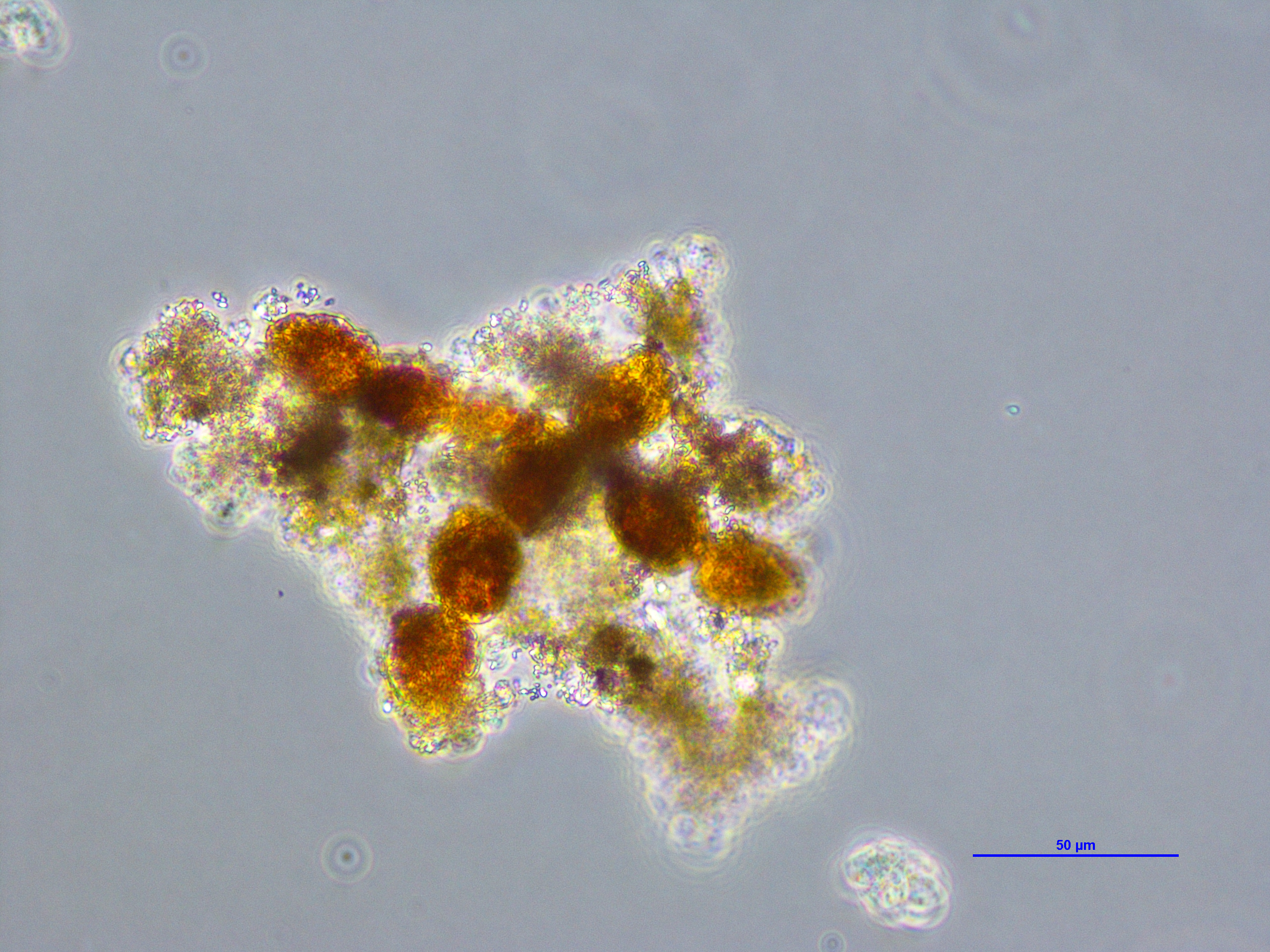
Fish-killing blooms of marine microalgae threaten the expansion of both Korean and Australian finfish aquaculture industries, causing recurrent multimillion-dollar losses and endangering seafood security.
As part of the IMAS Centre for Ecology & Biodiversity, Professor Gustaaf Hallegraeff’s research group has significantly contributed to our global understanding of these microalgal bloom events, with recent work focusing on mitigation efforts.
As part of this investigation, PhD student Andreas Seger explored and fine-tuned the use of clay minerals to effectively mop up fish-killing algal toxins.
Clay has long been employed in Korean waters as a mitigation strategy for fish-killing algal blooms, albeit with a focus on the removal of harmful algal cells through flocculation.
 The absorption of fish-killing algal toxins by clay is a novel approach and presents an important additional benefit to clay application.
The absorption of fish-killing algal toxins by clay is a novel approach and presents an important additional benefit to clay application.
In 2015, Andreas reconnected with Prof. Hallegraeff’s previous PhD student Dr. Tae-Gyu Park (now a senior scientist at the National Institute for Fisheries Science, Tongyeong, Korea) to witness the field application of clay in Korean waters first hand.
Collaborative experiments revealed the significant potential of combining Korean and Australian approaches, leading to the formation of the “Korea-Australia consortium to protect finfish aquaculture from harmful algal blooms”, which is supported by the Australian Government through the Australia-Korea Foundation of the Department of Foreign Affairs and Trade.
The project aims to further collaboration between the two countries by uniting both Australian and Korean research groups to formulate effective mitigation strategies.
The project is off to a running start, with the most effective clay type and particle size for a range of fish-killing algal species already identified.
Last month, Andreas and Prof. Hallegraeff travelled to Florianopolis, Brazil, to present some of these initial findings at the 17th International Conference on Harmful Algae.
The work stimulated much interest, particularly from countries such as Chile, which is just recovering from social unrests after a “Godzilla” algal bloom that resulted in the loss of over $50 million worth of Atlantic salmon.
Experiences such as these reiterate the urgent need for effective mitigation strategies and place the Korea-Australia Consortium at the forefront of harmful algal bloom mitigation research.